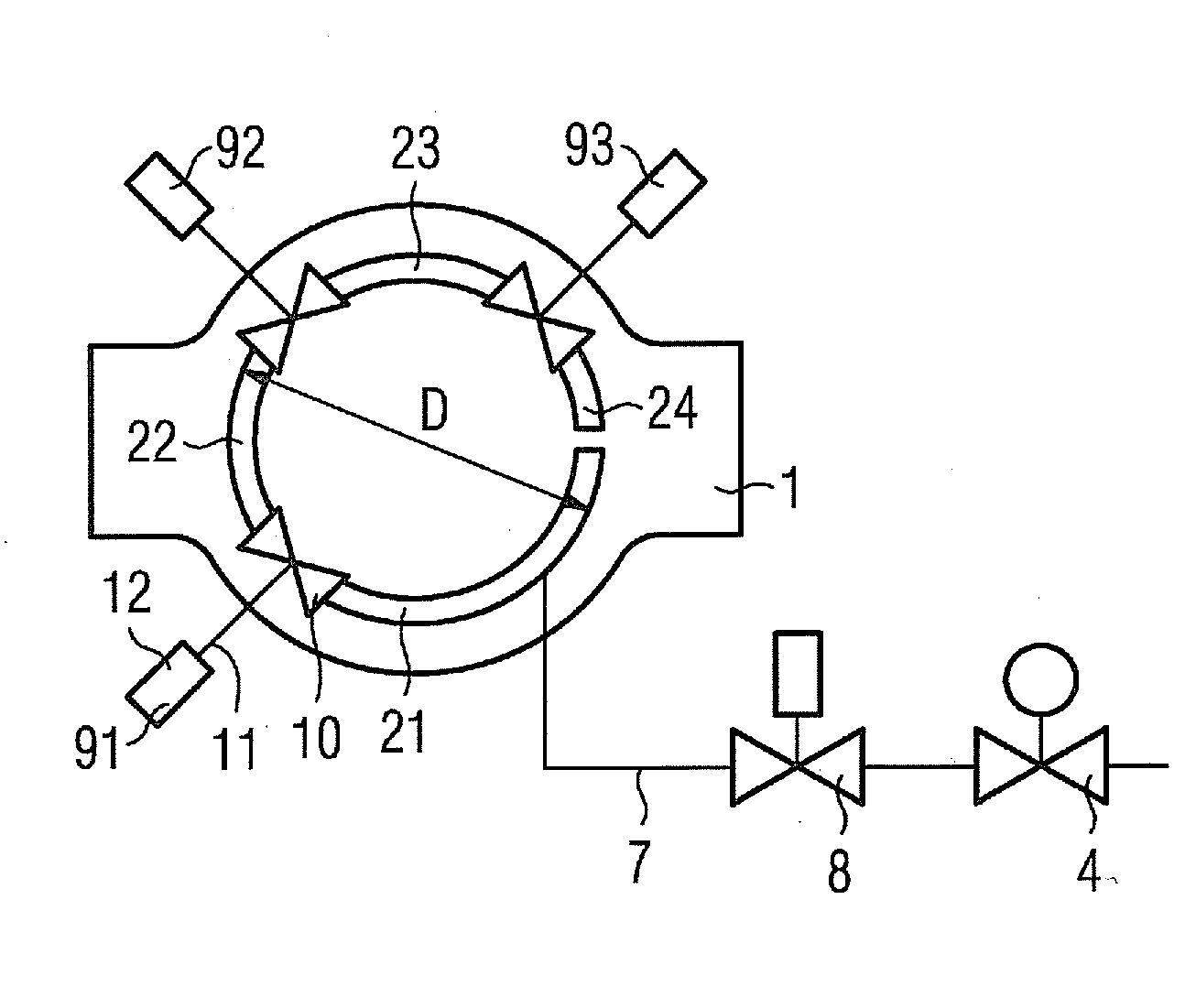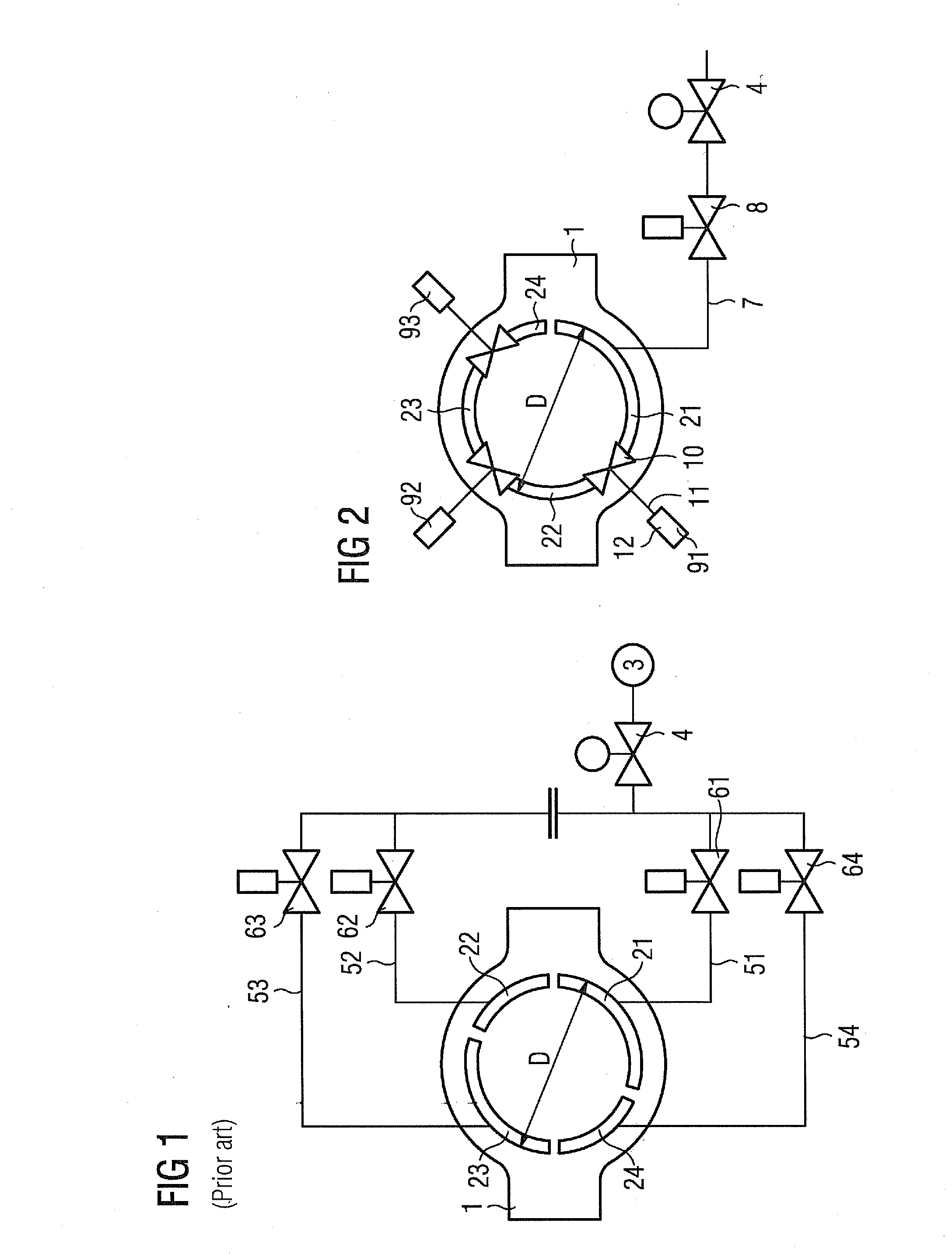Turbine Having Compact Inflow Housing Thanks to Internal Control Valves
a technology of internal control valves and inflow housings, which is applied in the direction of pump installations, machines/engines, mechanical equipment, etc., can solve the problems of large space occupation of the inflow housing with the external valve compartment or the pipes, high construction costs, and significant energy losses, and achieves a compact construction. , the effect of reducing the flow loss caused by long lines
- Summary
- Abstract
- Description
- Claims
- Application Information
AI Technical Summary
Benefits of technology
Problems solved by technology
Method used
Image
Examples
Embodiment Construction
[0022]FIG. 1 shows a schematic diagram of the last circuit of a conventional steam turbine, as is known from the publication mentioned at the start. The housing of the turbine comprises an inflow housing 1 in which the rotor not shown in the diagram is supported to allow rotation. The rotor has working fluid applied to it via four nozzle groups 21, 22, 23, 24 which extend in the shape of an annular sector on a common diameter D around the rotor.
[0023]The working medium—steam in the case of a steam turbine—flows through an inlet 3 into the inflow housing 1. Directly behind the inlet 3 is arranged a quick closing valve 4 through which the inlet 3 can be rapidly closed in an emergency. Behind the quick closing valve 4, the flow fans out in four supply lines 51, 52, 53, 54 which connect the inlet 3 with the nozzle groups 21, 22, 23, 24 in each case. The flow of the working fluid through the supply lines 51, 52, 53, 54 is controlled by respective control valves 61, 62, 63, 64. The nozzle...
PUM
 Login to View More
Login to View More Abstract
Description
Claims
Application Information
 Login to View More
Login to View More - R&D
- Intellectual Property
- Life Sciences
- Materials
- Tech Scout
- Unparalleled Data Quality
- Higher Quality Content
- 60% Fewer Hallucinations
Browse by: Latest US Patents, China's latest patents, Technical Efficacy Thesaurus, Application Domain, Technology Topic, Popular Technical Reports.
© 2025 PatSnap. All rights reserved.Legal|Privacy policy|Modern Slavery Act Transparency Statement|Sitemap|About US| Contact US: help@patsnap.com



